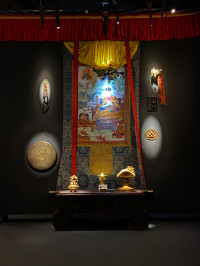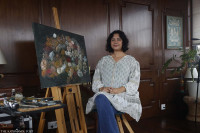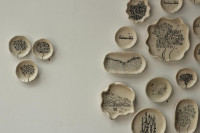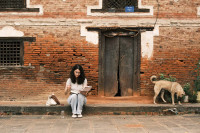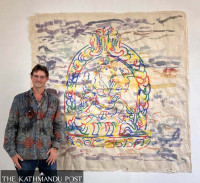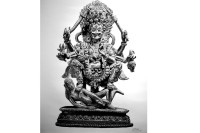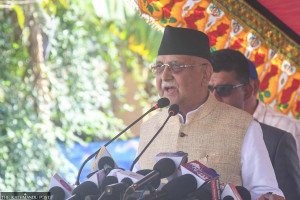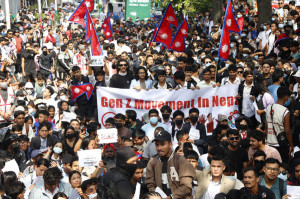Arts
Treasuring the mythical
The ongoing virtual art exhibition ‘Divya’, organised by Tulikaa, is an exceptionally well-curated exhibition that celebrates the talent of 17 traditional artists.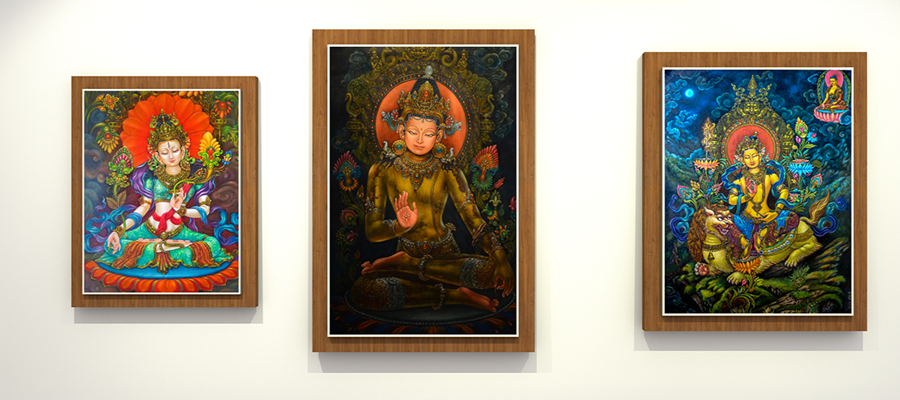
Ankit Khadgi
Returning from a hearty feast on his birthday, Lord Ganesh meets Chandra Dev, the moon god Chandra Dev sees Ganesha’s vahana, his mouse, struggling as it can’t handle the weight of the paunchy God. Chandra dev laughs at the sight and mocks Ganesh.
Raged by the mockery, Lord Ganesh curses the vain Chandra Dev that no one in the universe will worship him ever and whoever will look at the moon or fall under its light will face false allegations even when they are innocent.
This mythical tale, about the significance of Ganesh Chaturthi, and the various practises that take place on the day to commemorate the birth of Lord Ganesh, is the subject of Krishna Bhakta Dangol’s painting. His work is among the 29 other artworks that are exhibited in the latest virtual exhibition ‘Divya’, organised by Tulikaa, an art studio.
Curated by Ujen Norbu Gurung, the exhibition presents exceptionally crafted artworks of 17 artists, who have deftly depicted the mythical tales of various deities that are celebrated by Buddhists and Hindus.
From the furious Lord Bhairav to the harmonious and non-violent Sakyamuni Buddha to the compassionate, god of rain, Karunamaya, who’s also worshipped as Padmapani Lokeshvara, the exhibition is filled with artworks that depict the tales of god and goddesses, and their philosophies.
As soon as one starts taking a virtual tour of the exhibition, there are two distinct artworks that draw immediate attention. The first artwork, which is titled ‘Bhairava’, by an unknown artist, is a depiction of Lord Bhairava, one of the reincarnations and fierce manifestations of Lord Shiva. In the painting, we see a blaze of fire coming from the mouth of Bhairava who with his anger is annihilating as well as purifying the universe.
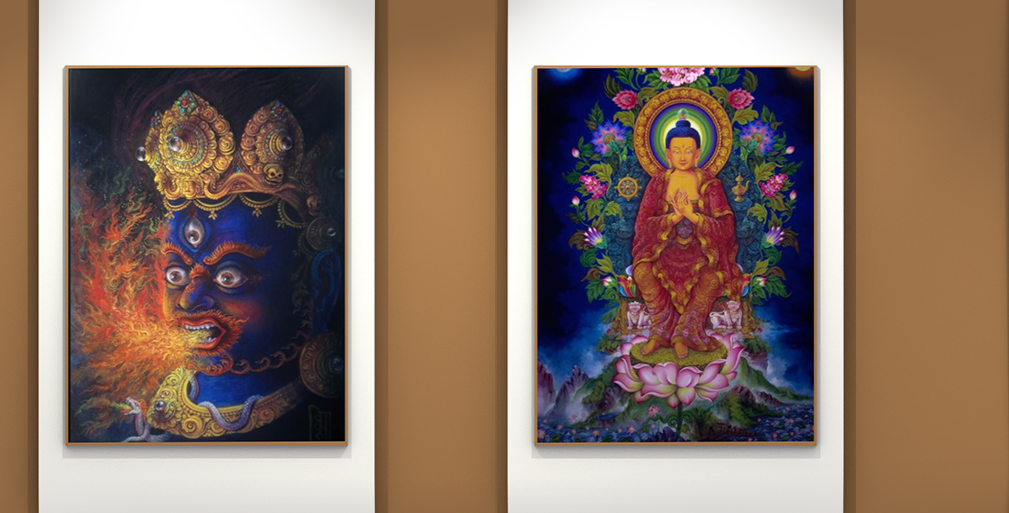
The raudra rasa or the emotions of krodha (anger) is immaculately depicted in the painting with the help of a dramatic light in the painting and the shift in colour tones, from dark to light shades, and by giving the central focus to the fire, which symbolises the wrath of the Bhairava.
Just next to it, a painting completely opposite to its theme is placed. Titled as ‘Maitreya Buddha’ by Bikash Kalikote, the artwork depicts Maitreya, a Bodhisattva, who is expected to appear on Earth after human beings obliterate the path to dharma.
Regarded as the form of Buddha who will restore peace in the world and will enlighten the world towards the pure dharma, Maitreya in the artwork is sitting on a raised throne, with his feet on a lotus. The setting where the Bodhisattva is placed is a tranquil, celestial landscape of hills, flowers, and rock formations that surrounds the lotus, reflecting how his presence can restore the beauty and tranquility to the earth.
Likewise, there are two images of the moon and the sun, kept at the top two corners to reflect the passing of time into a new realm of the living, with the presence of Maitreya Buddha, who will teach people to embrace compassion and move to the path of dharma.
The arrangement of both artworks is symbolic, as both artworks distinctively depict the two great philosophies of life: destruction and rebirth, through the help of incorporating the religious teachings of Buddhism. Other artworks also feature other Buddhist deities like Vajra Yogini, Saptalochini Tara, Green Tara, White Tara, and Manjushri.
Similarly, artworks depicting Hindu deities like Saraswoti, Laxmi, Indra, and Ganga are also put on display in the exhibition—but they are presented in a slightly altered manner than usually presented.
Let’s take for instance Sudarshan Sinkhwal’s painting, which is titled as ‘Laxmi’. In his painting, he has depicted the image of the Goddesses of Wealth. But unlike the Hindu iconography, the deity here is represented differently.
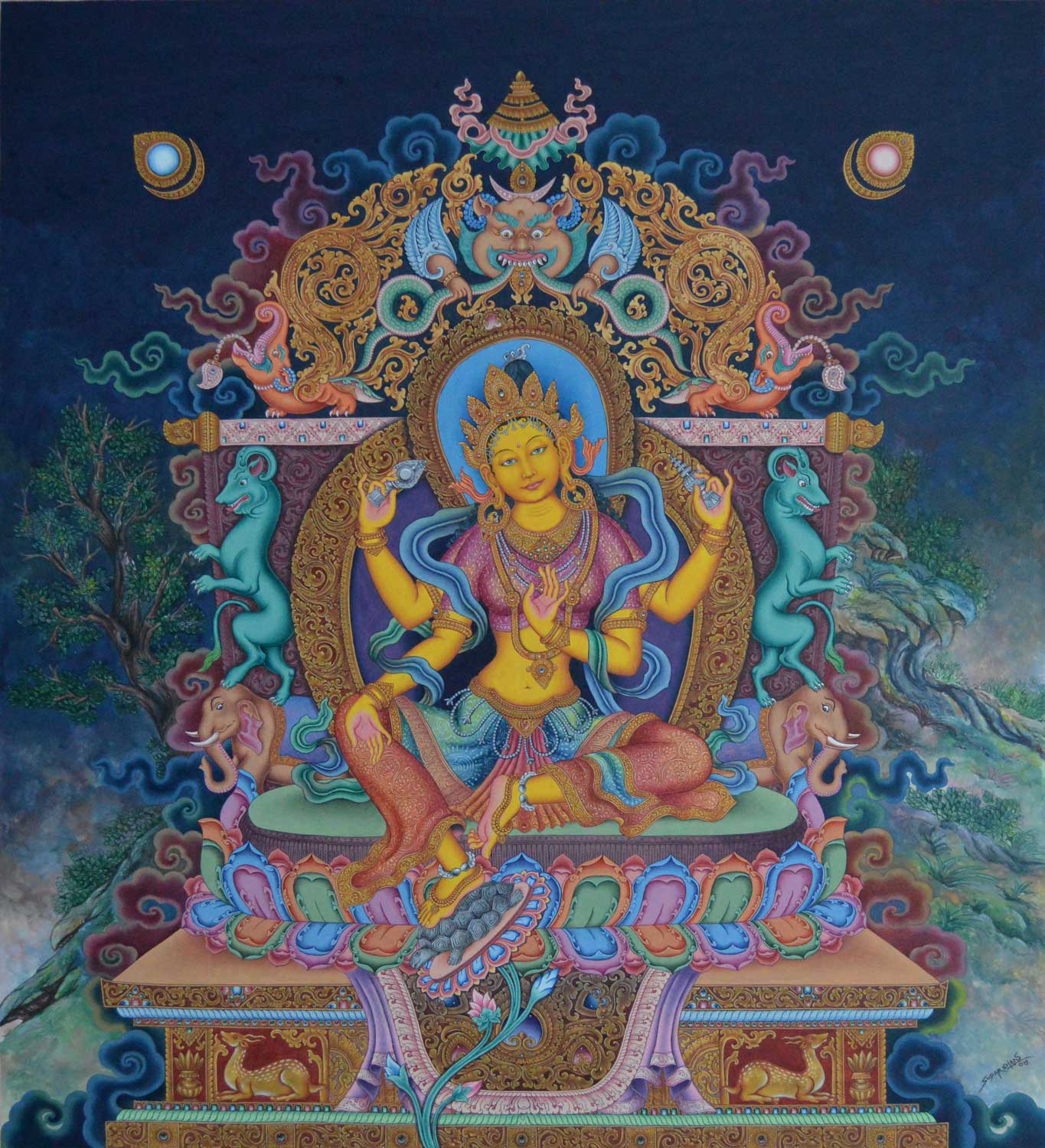
While her four hands, which symbolise the four purusharthas: dharma, artha, kama, and moksha, and her lotus seat are present in Sinkhwal’s painting, which is how the Goddess is generally represented, what makes his artwork unique is how beautifully he incorporates the elements of both Buddhism and Hinduism in a single painting. The composition of the painting is made in such a way that it resembles a Paubha painting, a specific form of art that has significant Buddhist or Hindu deities, as its central subject.
While the vibrant artworks popping different hues of colours have their own significance in the exhibition, Rojina Sinkhwal’s two monochrome artworks, ‘Dancing Ganesh’, and ‘Shakyamuni Buddha’, equally captivates the attention of the viewers with her intricate detailing.
Another highlight, and the most poignant artwork, of the exhibition, is of Sundar Shrestha. His three artworks, ‘ Vaishravana Kubera’, ‘Hari Hari Hari Hari Bahana Lokeshvara,’ and ‘Kalash of Karunamaya’, are not only aesthetically pleasing to look at but also are rich in storytelling, depicting the rich history and the ancient tales of our culture.
His ‘Hari Hari Hari Hari Bahana Lokeshvara’, which has been represented in many sculptures, is also a great way of incorporating legendary tales as a subject in one’s art. In the painting, he depicts a furious battle between Takshaka and Garuda, whose famous fight only stopped when their respective gurus, Avalokitesvara and Vishnu, appeared.
But his painting that deserves special mention is ‘Kalash of Karunamaya’. It stands out the most because of its sheer simplicity and aesthetics.
Centuries ago, when Kathmandu valley was suffering from a prolonged drought, Lord Karnumaya was brought to the valley, by King Narendra Dev, a priest and a farmer into the Valley, in the form of a bumblebee, as it was believed that in his presence, the tantrik Gorkhnath would break his meditation, which was responsible for the drought, as he had been meditating under all of the nagas, which were responsible for the rain.
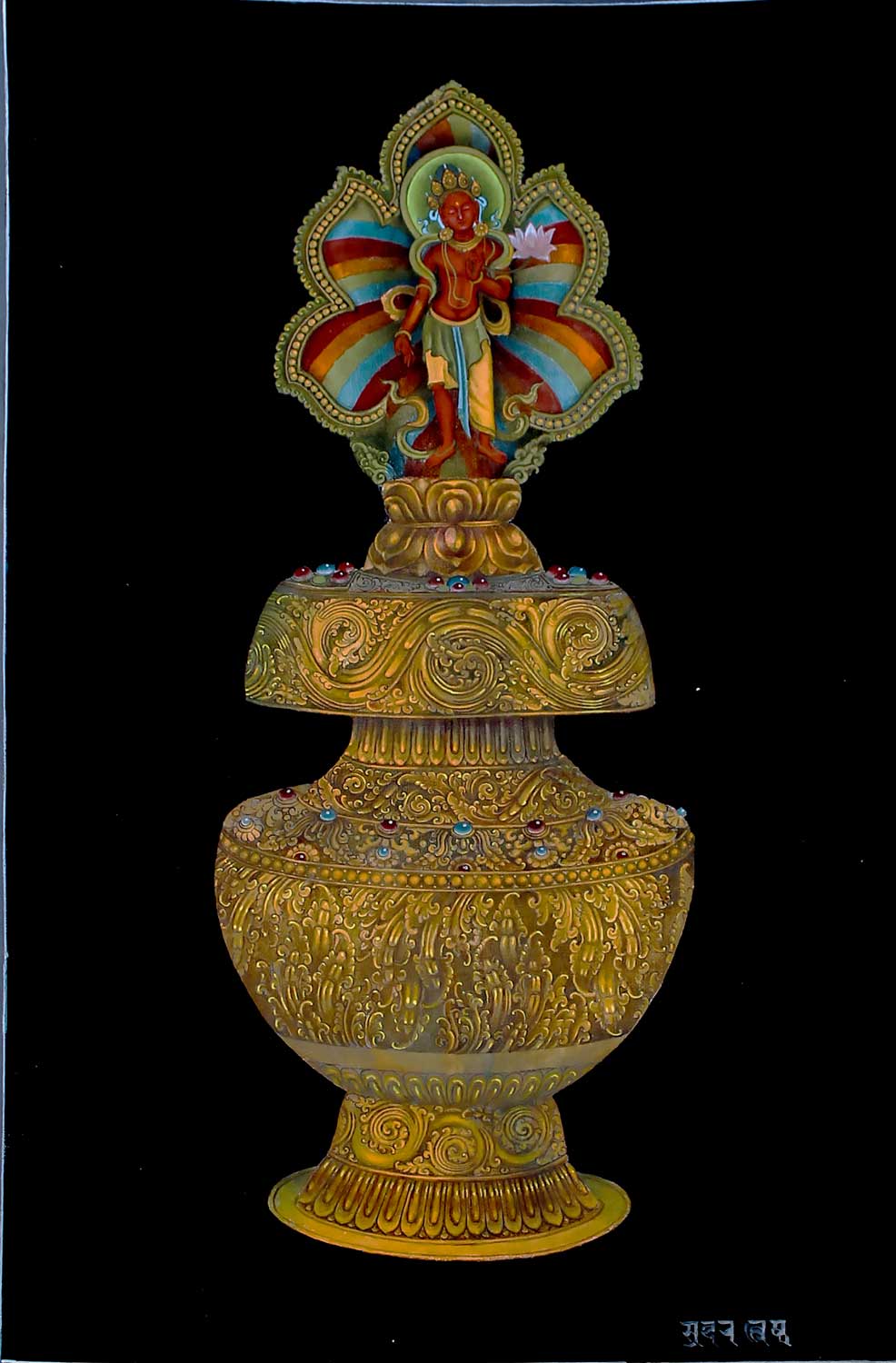
Depicting this scene, where Karunamaya transformed himself into a bumblebee and was captured into a golden kalash, which was brought into the valley, Shrestha’s painting beautifully re-tells a part of our history and mythology through the medium of painting.
Honestly, it is difficult to point out big flaws since the studio has taken heed to every aspect to make sure that the audience enjoys their time watching the virtual exhibition. The excellent and meticulously crafted artworks with fine detailing, the placement of the artworks, and even the background score, everything is perfectly composed.
However, the aspect where the studio slips is while providing the details of the artworks. In a few artworks, the intention behind the artist’s creation is clear about what they are trying to depict, but most of the details about the artwork and the deities they have depicted are taken from Wikipedia pages, with no effort made to write in the information in a new manner
One may argue that since all of the artworks depict deities and the information available on Wikipedia may suffice, but copy-pasting the same information on the subject matter which is available on the internet is ethically problematic and lazy work. When the studio has taken care of virtually everything to put up a great show, it should have also been careful about details like this. After all, it is the little things that matter.
Here’s the link to the exhibition:




 16.12°C Kathmandu
16.12°C Kathmandu
